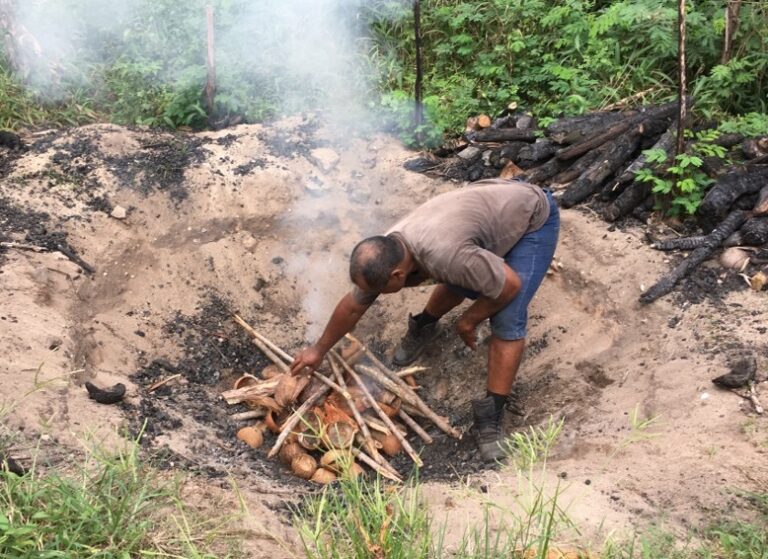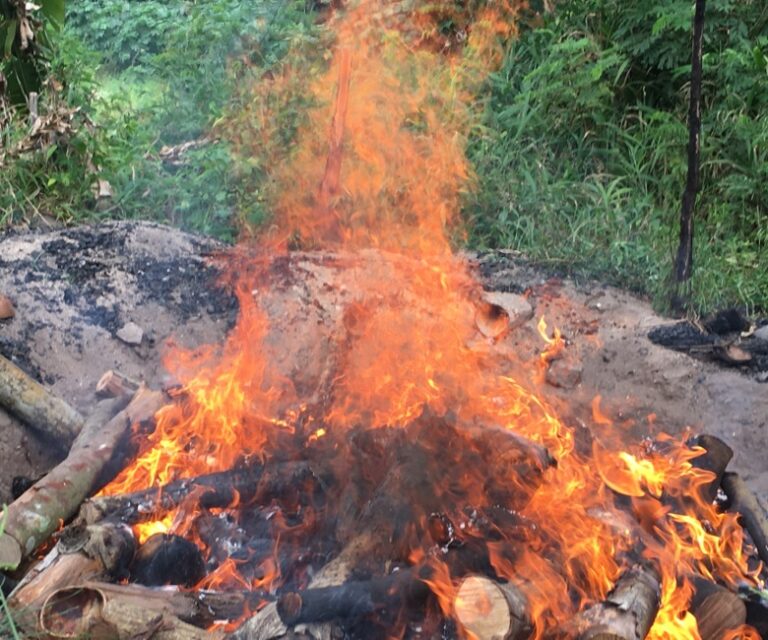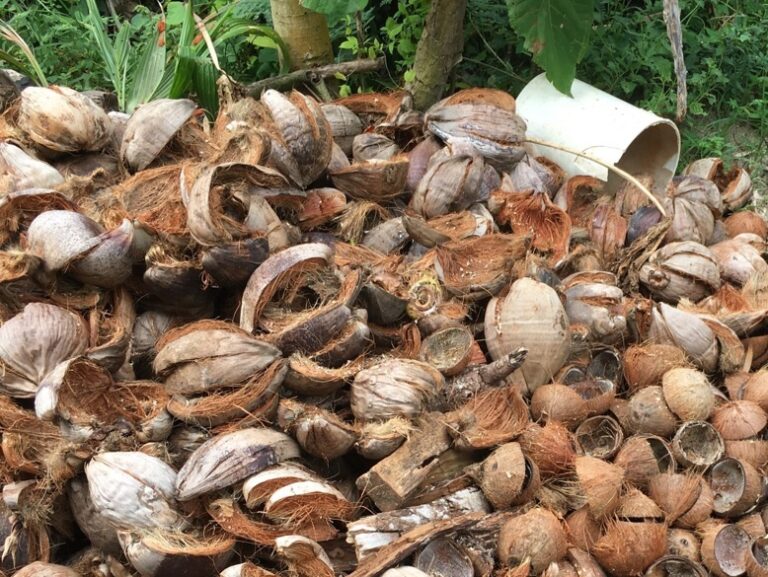© 2011-2025 The Avataric Samrajya of Adidam Pty Ltd, as trustee for the Avataric Samrajya of Adidam. All rights reserved.
Posted November 2020

We are always looking for new and sustainable ways to improve the soil fertility on the Naitauba organic farm. For the past four years we have been experimenting with a soil amendment sometimes referred to as the new “black gold”—to distinguish it from the old “black gold” of petroleum oil that has powered our civilisation for more than a century.
What is different about the new black gold?
Unlike traditional black gold, the new black gold only offers positive benefits. It is a renewable resource, it is easy and inexpensive to make, it has no negative or toxic side-effects, and even small amounts greatly improve the structure and fertility of the soil.
What is this magical substance that works so well to improve tropical soils?
It is “biochar”, simply a pure form of charcoal made from burning plant matter in a special way.
In just a few years, the use of biochar to improve soil has gone from being a crazy idea of a few “fringe farmers” to a commonly-accepted, scientifically-validated practice adopted by many experts in regenerative, sustainable agriculture.
Biochar is such a powerful ally in helping to improve soil fertility because of the way it works together with the microorganisms in the soil. Examined under a microscope, biochar has a sponge-like structure, made up of thousands of tiny spaces or pores. These pores provide living spaces and refuge for small, beneficial microorganisms in the soil (such as bacteria and fungi) from larger micro-predators in the soil (such as amoeba, protozoa, and nematodes) which cannot reach inside the pores.
The sponge-like biochar retains water and minerals on its tiny surfaces, preventing these from evaporating or washing away. Soil with added biochar also contains more air, which helps avoid soil compaction. It is often forgotten that plant roots breathe air just like the plant portions above the soil. Roots can drown or suffocate in hard, compacted soil.
How do we make biochar on the Naitauba farm?
After much research into biochar production methods, we found one that is extremely simple and effective. First, we dig the fire-pit, a simple hole in the ground about 1 meter deep and 2.5 meters across at the top. Then we put in some wood or other plant matter.

The secret of using such a simple fire-pit is to ensure that the fire is burning only at the top of the wood-pile, not at the bottom. When the fire is burning just at the top, the flames burn only the wood-gas emanating from the heated wood, not the wood itself. If the fire is allowed to burn the wood itself, you end up with simply ashes, not biochar. A properly-managed fire will produce an abundance of biochar every time.
We obtain the wood by collecting fallen branches and trees in the tropical forest on the island. Once the wood is burning, we add dry coconut husks and shells, gathered from the many coconut trees on the island.

The only other ingredient needed to make biochar is water. Once the wood in the biochar pit has burned just the right amount, water is poured over the embers to quench the fire.
After the fire is completely extinguished, the hot charcoal is left to cool overnight. Then the charcoal is dug out of the fire pit and put through the farm’s grinding machine. One biochar burn can yield as much as 500 litres of charcoal—enough to meet the farm’s needs for a month.

Grinding is important because it converts the charcoal pieces into fine black powder. When lumpy charcoal is ground into powder, the active surface area of the biochar increases by a factor of about 60.
How is biochar applied to the soil?
There is one last but crucial step in preparing the biochar before it is added to the farm soil. The biochar is “processed” in a compost pile in order to “charge” it with the microorganisms and plant nutrients that good compost contains. When the biochar comes out of the biochar fire-pit it is like an empty sponge with only air and some water in its pores. When biochar is “super-charged” with minerals and microorganisms in the compost, the pores in the biochar also contain life and food for the plants.

You don’t need to apply much biochar to improve soil fertility. About 200 litres of biochar should be added to each 2.5 cubic meters of compost.
What difference does biochar make when added to soil?
Without a lot of soil-testing and analysis, it is difficult to say exactly what improvements the biochar is making to our farm soil. This is because we are doing other things at the same time to support soil microorganisms, structure, water-retention capacity, and fertility. The simplest way to appreciate the changes in the Naitauba farm soil compared with a few years ago is to look at two factors: (1) the health of the plants and (2) the amount of labour it takes to look after the plants.
Certainly our lettuce, the main crop grown on the Naitauba farm, is not suffering from the black-spot bacterials disease in the hot season nearly as much as in previous years. The lettuce plants seem to be less stressed by the heat and are growing longer and larger. Also, our cabbages are no longer bothered by the bugs that attacked them in previous years.
In terms of labour invested in growing the crops, the soil takes less time to prepare for planting a new crop. Much less watering is needed in the dry spells because the soil holds water a lot better. And, now that the soil is not disturbed by tillage, the weeds have a harder time getting established and so take much less time being kept under control.
In conclusion, biochar has proven to be so valuable in helping the Naitauba farm become a more sustainable organic farm that we certainly agree it deserves to be called the new “black gold”, or perhaps more accurately, the new “black gold-dust”.
© 2011-2025 The Avataric Samrajya of Adidam Pty Ltd, as trustee for the Avataric Samrajya of Adidam. All rights reserved.